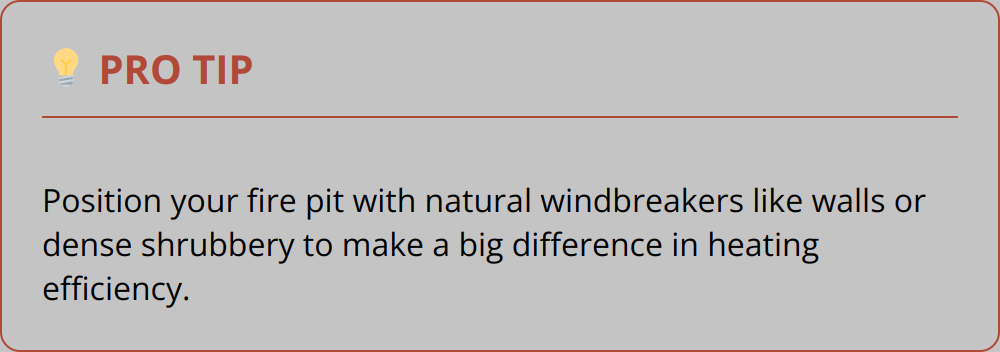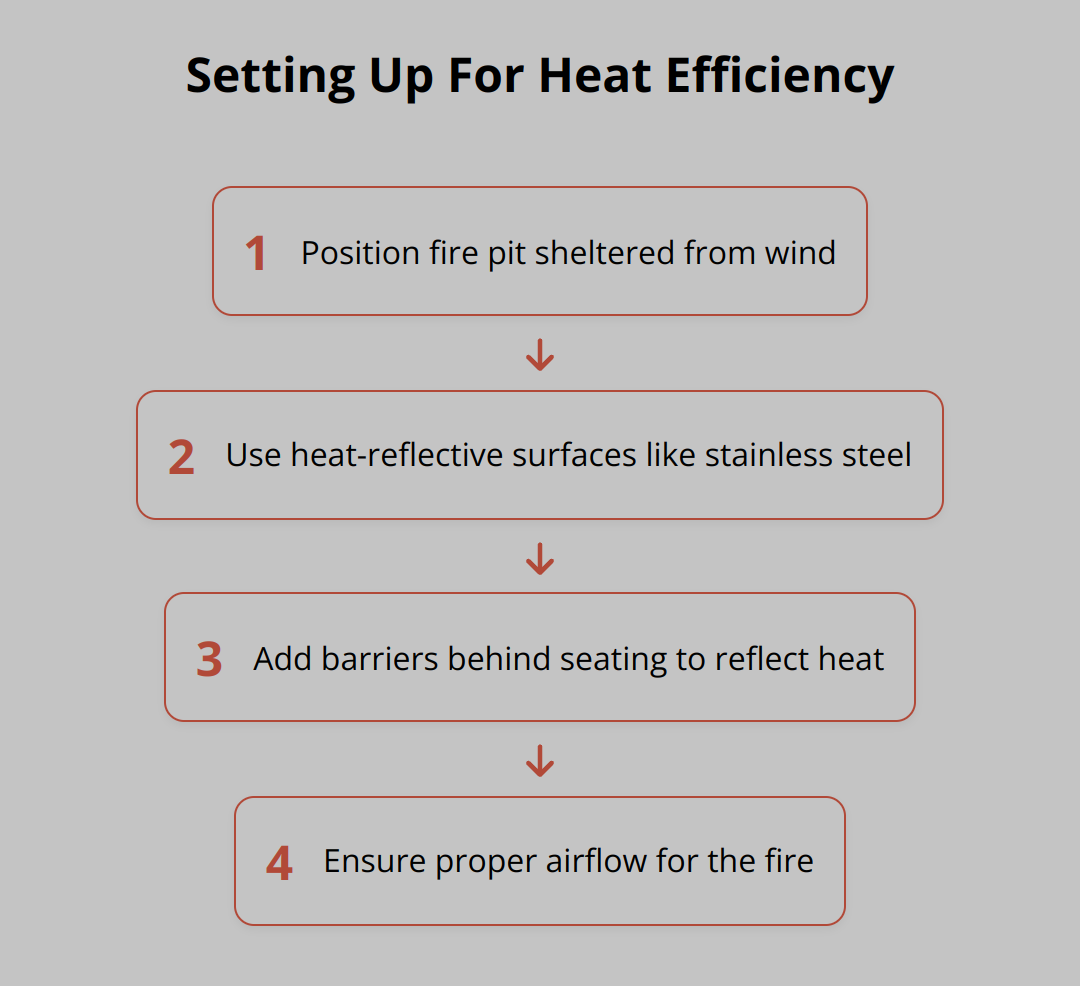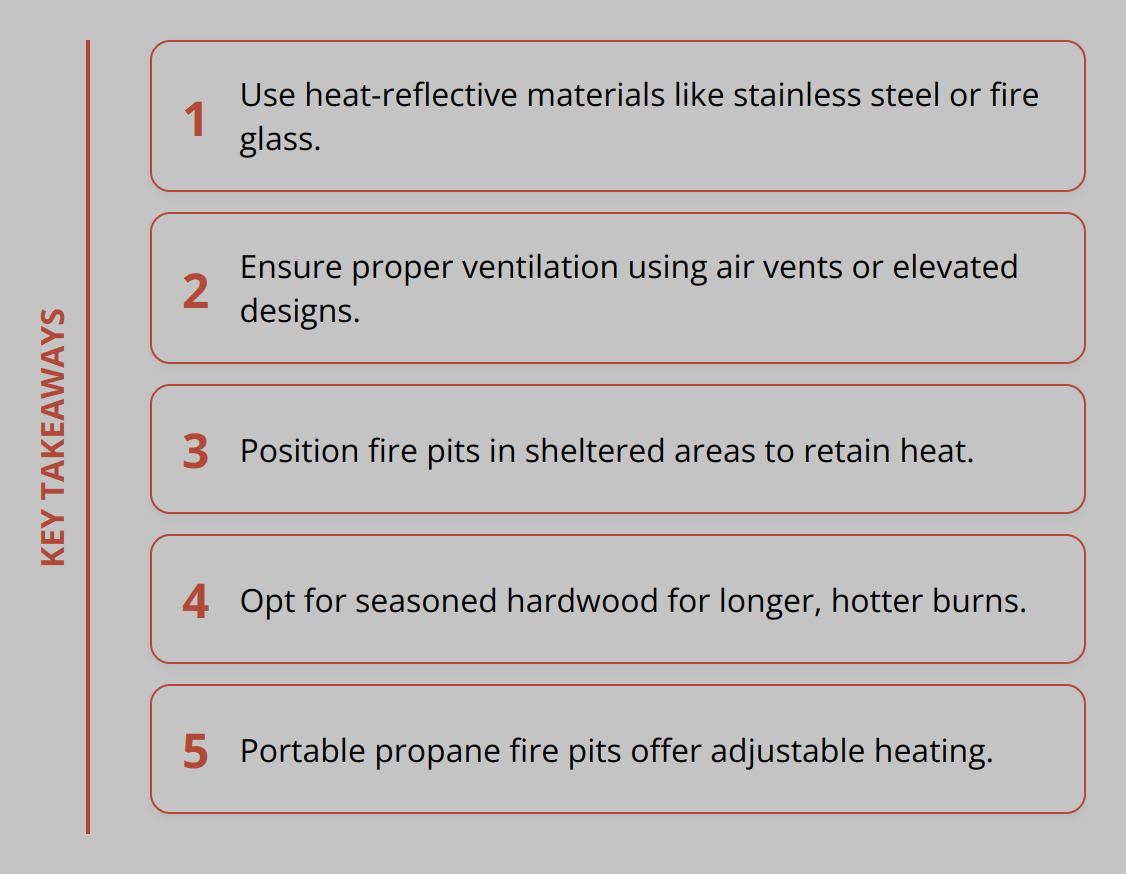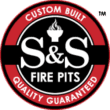
Heating efficiency is a top priority when it comes to maximizing your fire pit’s performance.
Understanding the factors that affect heating efficiency can make a big difference.
Here at S&S Fire Pits, we believe informed decisions lead to better outdoor experiences.
What Affects Heating Efficiency?
Material and design play crucial roles in a fire pit’s heating efficiency. For instance, steel fire pits are known to radiate heat evenly. This material is excellent at retaining and reflecting heat, which makes it a popular choice for those seeking both warmth and durability. The design also matters; fire pits with better ventilation systems allow for more efficient combustion, leading to higher heat production.

The type of fuel used significantly impacts heating efficiency. Hardwoods like maple and oak generate more heat than softwoods. On the other hand, propane fire pits offer quick ignition and adjustable heat levels but might not provide the same warmth as wood-burning pits. It’s crucial to choose the right fuel type to maximize the heating capacity see tips on burning materials.

Weather conditions and placement can either enhance or hinder heat distribution. Placing your fire pit in a sheltered area can help trap heat, making it more effective. Strong winds can drastically reduce heating efficiency, so positioning your fire pit with natural windbreakers like walls or dense shrubbery can make a big difference.
Practical tips:
- Steel fire pits are great for even heat distribution.
- Hardwoods burn hotter and longer than softwoods.
- Propane offers quick and adjustable heating but may lack the warmth of wood fires.
- Position your fire pit in sheltered areas to retain heat. Fire pit placement tips
Addressing these factors can significantly optimize your fire pit’s heating efficiency.
How to Improve Heating Efficiency
One way to boost your fire pit’s heating efficiency is by incorporating heat-reflective surfaces around the pit. Surfaces like stainless steel or fire glass help redirect heat outward, making your fire pit more effective at warming up the surrounding area. Positioning heat-reflective materials strategically can ensure that more heat reaches people sitting around the fire pit.
Proper ventilation and airflow are also critical for maximizing heating efficiency. A well-ventilated fire pit allows for better combustion, leading to higher heat output. Key designs include air vents at the base of the pit or a slightly elevated fire pit design, which improves oxygen flow to the fire. Remember to clear out ash and debris regularly to maintain optimal airflow.
Selecting the right fuel can make a substantial difference. Hardwoods like maple and oak generate significantly more heat and burn longer than softwoods. They are ideal for an extended evening outdoors. For those who prefer gas fire pits, propane and natural gas offer the advantage of controlled, adjustable heat. While propane may not match the warmth of hardwoods, its convenience is unmatched. Be aware that the BTU rating of your fuel source plays a pivotal role; for instance, a 50,000 BTU fire pit can effectively heat up to 700 sq ft.

Practical tips:
- Use heat-reflective materials like stainless steel or fire glass.
- Ensure proper ventilation by using air vents or elevated designs.
- Choose hardwoods for higher heat or propane for adjustable, convenient heating.
For more ideas on optimizing your fire pit’s performance, check out our fire pit maintenance tips.
Efficient Fire Pit Usage
Backyard Heating Solutions
Optimizing backyard fire pit usage starts with the right setup. In a typical residential backyard (about 500 sq ft), a 40,000 BTU fire pit can offer adequate warmth. Positioning your fire pit in an area sheltered from the wind can drastically improve heating efficiency. Using heat-reflective surfaces like stainless steel around your fire pit directs more heat to the seating area, enhancing comfort.

For example, adding a stone or metal barrier behind seating can trap and reflect heat back. Additionally, incorporating features like built-in seating arrangements ensures that everyone stays warm without blocking essential oxygen flow to the fire.
Outdoor Dining Areas
Restaurant owners looking to extend their patio dining season should consider fire pits as a heating option. In commercial settings, fire pits rated up to 200,000 BTU can efficiently cover expansive areas. Patio heaters might complement fire pits for consistent warmth. Installing a combination of fire pits and patio heaters can balance aesthetics and functionality.
Standing fire pits near dining tables offer warmth and ambiance, but their heat might not reach everyone. A strategic layout that includes clustering several smaller fire pits around the dining area may offer a better heat distribution for patrons. This integrated approach not only enhances comfort but also retains the charm of an outdoor dining experience.
Campsite Warmth Optimization
For camping, fire pits are essential for warmth and cooking. Portable propane fire pits, typically ranging between 40,000 to 70,000 BTU, provide efficient and adjustable heat. Campers should focus on wind-blocking strategies to optimize heat distribution. Arranging large rocks or using foldable windshields around the fire pit helps keep the heat contained.

Hardwood logs, such as oak or maple, are ideal for generating more heat. Ensuring the wood is properly seasoned boosts its efficiency.
Camping tips:
- Use windshields to prevent heat loss
- Opt for seasoned hardwood logs for longer, hotter burns
- Portable propane fire pits offer adjustable heat
Applying these practical tips can make a huge difference in how effectively your fire pit can heat any outdoor space. For more guidance on maintaining fire pit efficiency, check out our fire pit maintenance tips.
Conclusion
Understanding heating efficiency involves several key factors. The material and design, such as steel fire pits and their ventilation, play a role in how effectively heat is produced and distributed. The type of fuel is also crucial, with hardwoods offering more heat compared to softwoods and propane.

Proper placement in sheltered areas and using heat-reflective surfaces can significantly boost the heating efficiency of your fire pit. Regular maintenance, like ensuring good ventilation and cleaning out ash, is vital for consistent performance.
Key tips:
- Choose steel fire pits for even heat.
- Use hardwoods for more heat.
- Propane offers adjustable, convenient heat.
- Opt for sheltered placements for better heat retention.
We at S&S Fire Pits understand the importance of heating efficiency in enhancing your outdoor experience. Our handmade, 100% unique fire pits are built from solid USA steel, ensuring quality and durability. Explore our range of products here.
By implementing these efficiency tips, you can ensure your fire pit performs its best, providing warmth and enjoyment year-round. For more detailed guidance, check out our maintenance tips.


